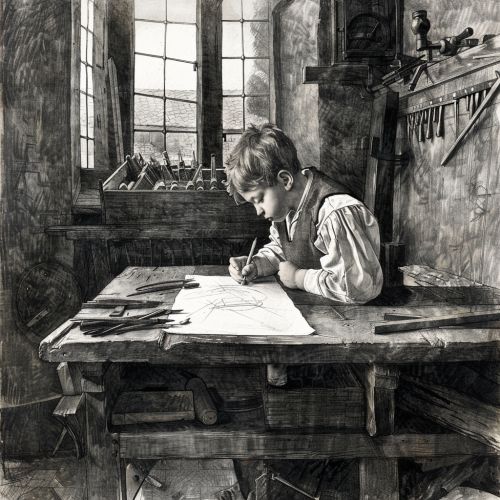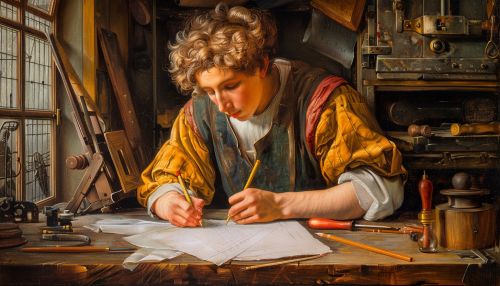Albrecht Dürer
Early Life
Albrecht Dürer was born on May 21, 1471, in the Imperial Free City of Nuremberg, one of the largest trade centers in Europe during the Late Middle Ages. His father, Albrecht Dürer the Elder, was a successful goldsmith originally from Hungary, who settled in Nuremberg in 1455 and married Barbara Holper, daughter of a local merchant.


Artistic Training
In 1486, Dürer began his formal training as an apprentice to Michael Wolgemut, a leading artist in Nuremberg, who produced a variety of works including woodcuts for books. During his apprenticeship, Dürer would have been exposed to a wide range of artistic techniques and styles, including the International Gothic style that was prevalent in Germany at the time.
Travel and Influence
In 1490, Dürer completed his apprenticeship and embarked on a period of travel known as the "Wanderjahre" or "journeyman years". He visited various cities in Germany before travelling to Venice in 1494. The art and culture of the Italian Renaissance had a profound impact on Dürer, influencing his approach to composition, perspective, and detail.
Mature Work
Upon his return to Nuremberg in 1495, Dürer opened his own workshop and began to produce a series of works that demonstrated his synthesis of the Northern European emphasis on detail and the Italian focus on composition and perspective. His works from this period include the Apocalypse series, the Large Passion, and the Life of the Virgin.
Later Life and Death
In his later years, Dürer took on a variety of roles, including work as a theorist and author. He wrote several books on geometry, fortification, and human proportion, including the influential "Four Books on Human Proportion" published posthumously in 1528. Dürer died in Nuremberg on April 6, 1528.
Legacy
Dürer's influence on the art world is profound. His innovative approach to composition, detail, and perspective had a significant impact on the development of Northern Renaissance art. His theoretical works contributed to the development of the scientific revolution in the 16th century.
